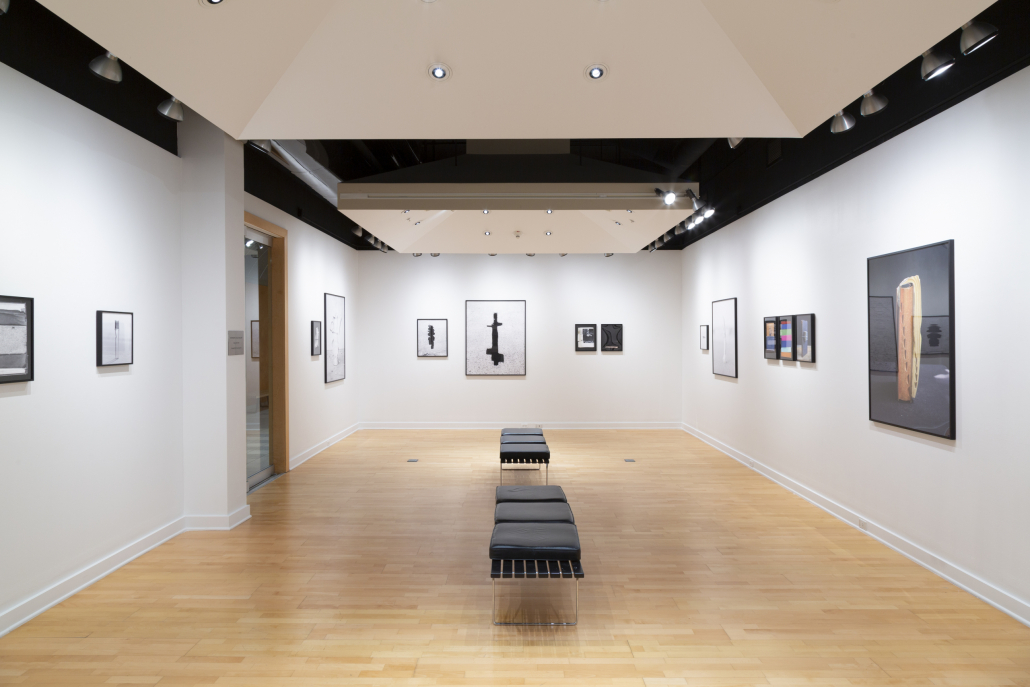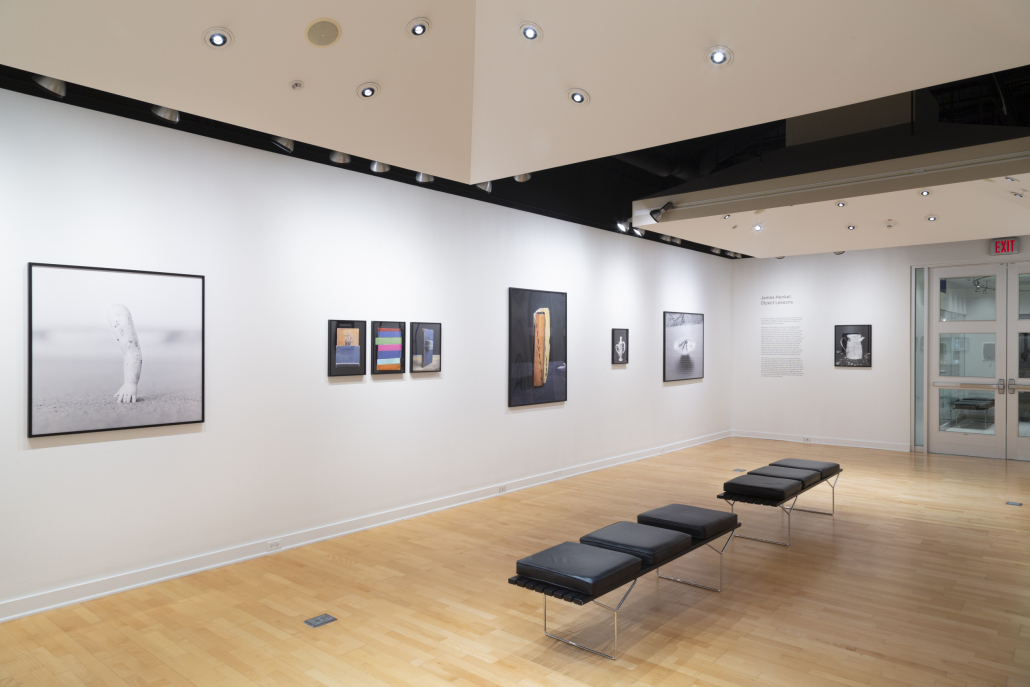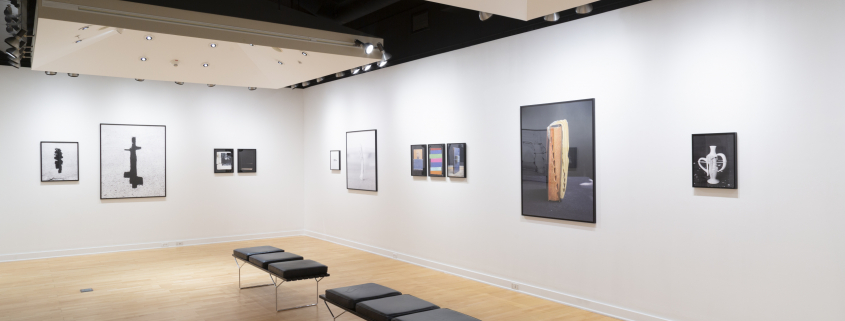Review: Carl Mellor on James Henkel’s Object Lessons
This review is written by Carl Mellor, a freelance writer. He covered visual arts for the Syracuse New Times from 1994 to June 2019. Mellor continues to write about exhibits and artists in the Syracuse area.
—
James Henkel’s solo exhibition at Light Work samples an extensive body of work, one created during a career spanning more than 30 years. Henkel photographs discarded objects of all kinds: pitchers, cups and bowls, toys, bricks and bits of concrete, and most of all, books. He gathers ordinary items of no discernible value, repairs or repositions them, and ultimately creates memorable images.
The current show, for example, includes Henkel’s photo of a comb, with both physical reality and a sense of illusion playing a role. The comb stands on one end, appearing to find its balance and perhaps even move on. Henkel’s lens and composition skills have transformed the object.
Similarly, a photo of two toothbrushes places them standing up and in close proximity to each other. The head of each toothbrush touches its counterpart, suggesting visual implications. From one perspective, this looks like two figures embracing. From another, there’s a touch of irony in this view of one toothbrush massaging another toothbrush instead of teeth.
A third photo shows an artificial arm standing on its own. The hand’s fingers are thrust into a surface, inviting viewers to ask questions. Where did the arm come from? Why was it discarded?

Elsewhere, the exhibit documents Henkel’s multiple approaches to the objects he photographs. For “Brick #2,” he stacks bricks which, in the presence of light, cast a long, jagged shadow. That piece is a companion to “Bricks #5,” a work also encompassing bricks and a shadow.
And Henkel plays with ceramic objects that are damaged and not fully restored. A pitcher’s handle is strapped to one side, but much of one side is missing. Chips from the battered object reside nearby. We view the object as it currently exists, not as it once was. A second photo, “Two-Handed Vase,” operates in the same context; an additional handle is strapped on.
“Shallow Bowl,” one of the best pieces in the exhibit, offers another example of Henkel’s creativity. We don’t see the bowl’s exterior at all. Instead, the camera’s perspective seems to come from within the bowl, extending up through a surface opening. We get a glimpse of a forest scene outside.
The exhibition also references Henkel’s intense interest in books. He’s clearly comfortable working with them, and that translates into interesting, incisive images.
In one instance, he depicts a tall, frayed book cover with a much smaller book strapped to it. A second work portrays a book cover combined with an illustration of a medieval ship. In a third piece, a book’s innards are wrapped around a largely intact volume.
“English Poet,” meanwhile, consists of pages cut up and collaged. Viewers see a partial view of a man’s face, a similar view of a second face, and a caption: “English poet, novelist and critic.”
Mentioning those works offers only preliminary discussion of Henkel’s facility for interpreting cast-off books. Among other things, these are different from other objects photographed by the artist.
Books contain text and offer narratives and ideas in formats as different as novels, biography, and poetry. That challenges viewers to compare and contrast books and objects such as bricks and ceramics.

That challenge, of course, comes by implication. At the very least, Henkel’s photos, taken as a group, reference the meaning of objects in our lives. When do they have emotional import? When do they have little or no impact?
Those questions aren’t part of a seminar. Henkel is a talented visual artist who’s able to work with varied materials and to keep improvising successfully. “James Henkel: Object Lessons” nicely communicates his skills and points to themes in his work. It offers a fine overview of a veteran photographer’s work.
Henkel, it should be noted, has taken part in many exhibitions over the years. Indeed, he’s shown his work at Cavallo Point Gallery in San Francisco, Flanders Art Gallery in Raleigh, North Carolina, and Nash Gallery at the University of Minnesota, among other venues in the United States. In addition, his images have appeared in galleries in Iran, Russia and China.
His solo exhibit is on display in Light Work’s Kathleen O. Ellis Gallery. A second show, devoted to work created by winners of the 2021 Light Work grants, is on view in the Hallway Gallery. It features artworks by Carla Liesching, Paul Pearce and Jessica Magallanes Martinez.
The Light Work exhibit closes December 9, 2021
—
RELATED PROGRAMS
All programs are free and open to the public. For parking information, visit parking.syr.edu
Thursday, November 4, 5-7 p.m. — Gallery Reception
Thursday, November 4, 6 p.m. — Gallery talk with exhibiting artist James Henkel



